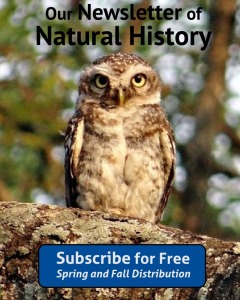After months of preparation a dedicated team met for three days to clean the Natural History collection that had sustained soot damage from the school fire.
In the week leading up to the much-anticipated cleaning event, the group spent a few hours each day prepping. This process involved moving the collection from the containers into the area of the school that had not sustained fire damage and was now smoke damage free, where it would be cleaned. Upon Alan Fletcher’s suggestion, a small area was tented in the old Music Room, the spot closest to the storage container by the window. Heat and lights were set up inside the cleaning area. Ruth provided snacks for the group.
Then the big day arrived. Over time, eighteen people worked carefully and systematically, making their way through the birds, mammals, fossils, bones, photos, files, and more. The taxidermied specimens required the most attention: a careful procedure with special vacuums, brushes, and sponges was followed. To the surprise of all, and thanks to the diligent cleaning efforts, the collection was shining in only three days.
As each specimen was placed back in their temporary (and decontaminated) container home, we marveled that they looked “better than ever,” with eyes sparkling, feathers and fur fluffed. As well as being beautiful and educational, they serve as a reminder to protect and preserve the living natural world and its inhabitants. It felt good to have them back to a pristine condition.
Thanks to everyone on the team!
- Conservators from the Royal BC Museum in Victoria: Kasey Lee (Senior Conservator) and Lauren Buttle (Paper Conservator).
- Community Volunteers: Susan Cain, Rachelle Chinnery, Diane Proc, Elaine Savoie, Mary Savoie, and Wayne Wai.
- Restorers and Cleaners from Service Masters Restorers, Vancouver Island: Gwen, Heather, and Valerie (paid for by insurance).
- The Natural History Stewards: Barb Biagi, Ruth Goldsmith, Bill Hamilton, Susan Hoppenfeld, Tina Wai, Neil Wilson, and Norma Wilson.
- Judith Lawrence for providing accommodation for the Conservators.
We’d also like to thank all those who volunteered to help, but never had a chance because the job finished sooner than anticipated.
As one volunteer described, it was truly a labour of love.
In the video below, Neil Wilson of the Natural History Centre explains part of the cleaning process while cleaning the kingfisher.
 Hornby Island Natural History Centre
Hornby Island Natural History Centre


























Makes me smile and cry at the same time. Thank you so much each and everyone! There are not enough words, smiles or tears to express what the Natural History Center means to our children and to our community. So thankful that it was able to be restored. A time of hard work on all levels, recovery and hopefulness for the future of our school and our community. Thank you to the Natural History stewards and friends for your dedication, leadership and stamina.
LikeLike